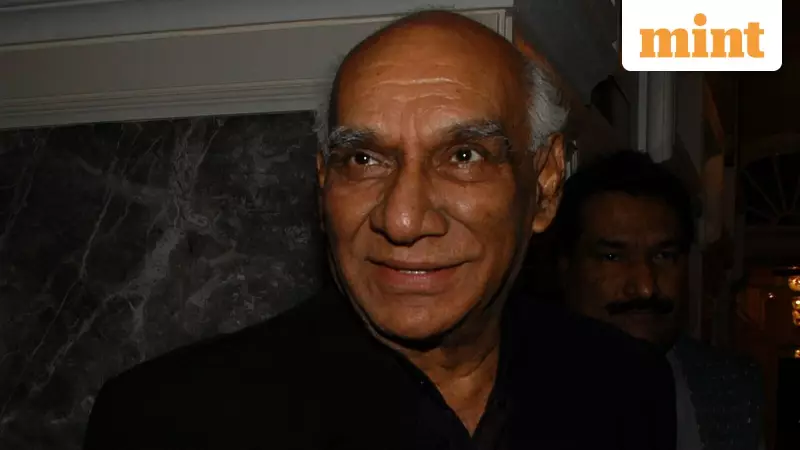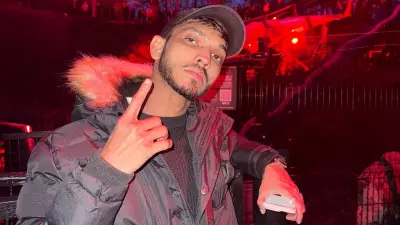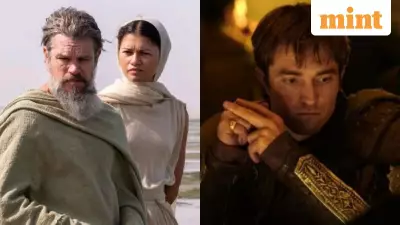
The landscape of modern Bollywood, a $2-billion industry producing nearly 2,000 films annually for a global audience of three billion, was shaped by many. Yet, one name stands as a colossus: Yash Raj Chopra. He was not merely a filmmaker; he was an architect who built a vertically integrated empire, Yash Raj Films (YRF), creating the blueprint for the contemporary Hindi film studio. His journey from a refugee's son to the undisputed 'King of Romance' is a masterclass in merging artistic vision with sharp commercial strategy, culminating in an enterprise valued at over a billion dollars.
From Lahore to Bombay: The Formative Years
Born in Lahore in 1932 as the youngest of eight children, Yash Chopra's destiny was shaped early. He was raised largely by his elder brother, the already-successful filmmaker Baldev Raj Chopra. Defying his father's wishes for him to become an engineer, the magnetic pull of cinema drew him to Mumbai, then Bombay. Under the safe banner of his brother's B.R. Films, Chopra directed six consecutive hits. These early works were not just commercially successful but also groundbreaking. Dhool Ka Phool bravely tackled the subject of motherhood outside wedlock, while Waqt is credited as India's first true multi-starrer ensemble film, showcasing his knack for ambitious storytelling.
The Pivotal Year: 1970 and the Birth of an Empire
The year 1970 marked a profound turning point in both his personal and professional life. He entered an arranged marriage with Pamela Singh in a traditional ceremony. Their honeymoon to Switzerland, however, would leave an indelible mark on Bollywood itself. The snow-capped Alps, pristine lakes, and the romantic aura of Interlaken captivated the groom, becoming his signature aesthetic. This arranged marriage blossomed into a deep creative partnership lasting 42 years, with Pamela co-writing, singing, and serving as an associate producer on many of his films.
Upon returning from his honeymoon, Chopra made his most audacious entrepreneurial move. In an era where directors typically worked for external producers, he launched his own studio, Yash Raj Films (YRF) in 1970. This boldness echoed the pioneering spirit of Hollywood moguls like Carl Laemmle, who founded Universal Pictures. YRF's debut film, Daag in 1973, was a major hit, setting the stage for a series of game-changing blockbusters that cemented the studio's powerhouse status. These included the iconic Deewaar (1975), the poetic Kabhi Kabhie (1976), and the powerful Trishul (1978).
Resurrection and Reinvention: The King of Romance
Even empires face challenges, and the 1980s brought a severe downturn for YRF with a string of flops like Faasle and Vijay that nearly bankrupted the studio. Facing financial ruin, Chopra staked everything on a return to his romantic roots with Chandni in 1989. The film's spectacular success resurrected YRF and went on to define the extravagance of 1990s Bollywood.
The studio never looked back, delivering a succession of monumental hits like Darr, Dilwale Dulhania Le Jayenge (DDLJ), and Dil To Pagal Hai. In these films, Chopra shaped an entire generation's understanding of love, gifting audiences timeless lines like, "Bade bade deshon mein aisi chhoti chhoti baatein hoti rehti hain" from DDLJ.
His most enduring legacy, however, transcends individual films. Like Walt Disney or George Lucas, he pioneered a vertically integrated studio model that was rare in India. YRF controlled every aspect of the filmmaking process: production, post-production, domestic and international distribution, music, home video, and talent management. The establishment of the state-of-the-art YRF Studios in 2005 created a self-sufficient ecosystem that insulated the company from market volatility while ensuring stringent quality control.
Chopra also possessed a clinical eye for talent. He was instrumental in elevating Amitabh Bachchan into the iconic 'Angry Young Man' with Deewaar and anointing Shah Rukh Khan as the modern face of romance through films like Darr and Dil To Pagal Hai. His films explored the fragility of human relationships with profound dialogues such as, "Kabhi-kabhi zindagi ek pal mein poori badal jaati hai."
While his business strategy was methodical, his cinematic soul was purely emotional. He famously declared, "I don't make romantic films. I make films about human relationships." This philosophy led him to use international locations, especially Switzerland, not as mere backdrops but as integral aesthetic signatures for Bollywood romance. He shot there so often and so magically that the Swiss government, in a gesture of gratitude, christened a mountain lake in Alpenrausch as 'Chopra Lake'.
From exploring the complexities of adultery in Silsila to championing self-aware women like Sridevi's character in Chandni, his films consistently pushed social boundaries while remaining palatable to mainstream audiences. Yash Chopra's extraordinary journey proves that in creative industries, true enterprise means backing a powerful aesthetic vision with capital and courage. He didn't just make movies; he built an institution that would outlive him, creating an enduring template for how art can fundamentally shape an entire industry.





